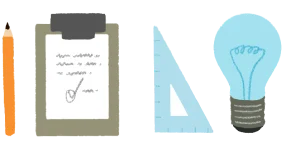Sign up for our UX Blog
Don't miss the latest! We'll notify you of each new post.

Eye-tracking is a research method that measures where and how long users look at specific areas of an interface or visual stimulus. It uses specialized hardware and software to track eye movements, fixations (when the eye pauses on an element), and saccades (rapid movements between fixations). This technology provides objective data about users' visual attention patterns that can't be captured through other research methods.
Eye-tracking data is typically visualized through heat maps (showing where users looked most frequently), gaze plots (showing the sequence of fixations), and areas of interest analysis (quantifying attention to specific elements). These visualizations help researchers understand what elements attract attention, which are overlooked, and how users visually process information—insights that users themselves may not be consciously aware of or able to articulate.
Eye-tracking is important because it provides objective data about visual attention that users themselves may not be aware of or able to accurately report. Our eyes move rapidly and unconsciously as we process information, making it difficult to recall exactly where we looked or in what order. Eye-tracking captures these unconscious behaviors, revealing insights about what attracts attention, what gets overlooked, and how users visually navigate interfaces.
This method helps validate design decisions with empirical data rather than assumptions about where users will look. It's particularly valuable for optimizing layouts, evaluating visual hierarchy, testing the effectiveness of calls-to-action, understanding how users scan content, and identifying elements that distract from key information. Eye-tracking can reveal usability issues that might not be apparent through other testing methods, such as users looking for information in the wrong places or missing important elements entirely.
To use eye-tracking effectively in UX research, define clear research questions that eye-tracking can help answer, such as whether users notice key elements or how they scan content, select appropriate eye-tracking equipment based on your needs and budget (from specialized hardware to webcam-based solutions), create realistic tasks that represent how users would naturally interact with your interface, and combine eye-tracking with other methods like think-aloud protocols to understand not just where users look but why.
When analyzing eye-tracking data, look for patterns across multiple users rather than focusing on individual behaviors, compare fixation patterns with task success to understand the relationship between attention and performance, use multiple visualization types (heat maps, gaze plots, etc.) to gain different insights, and triangulate eye-tracking data with other research findings for a more complete understanding. Remember that eye-tracking is a specialized method that requires proper setup and calibration—consider working with experienced researchers or vendors if you're new to this approach.